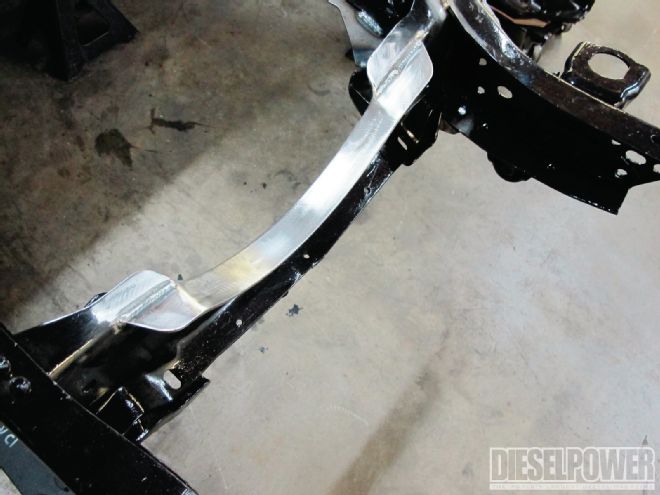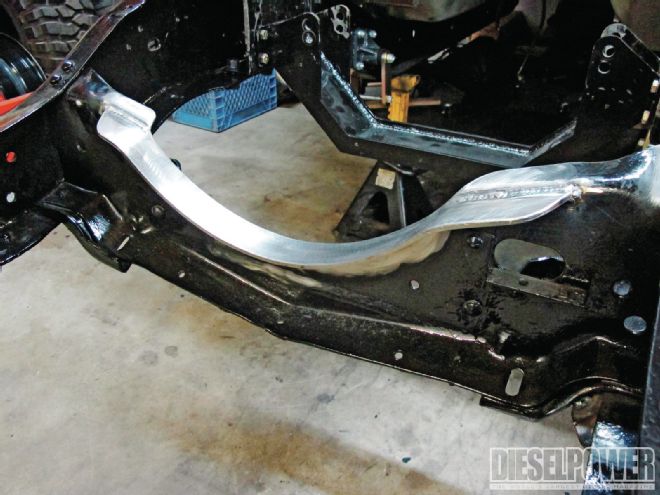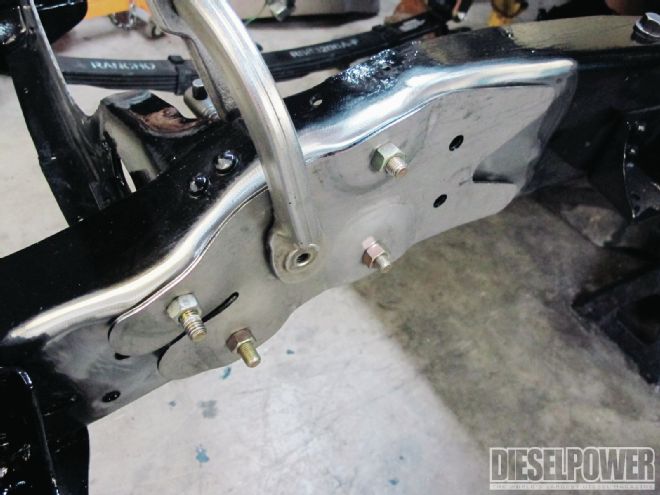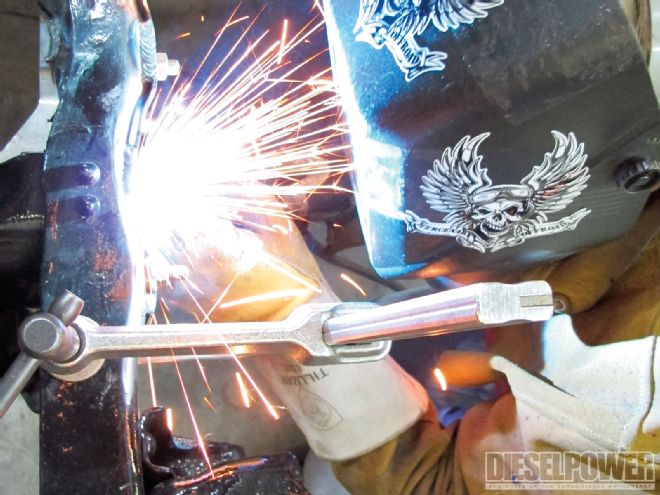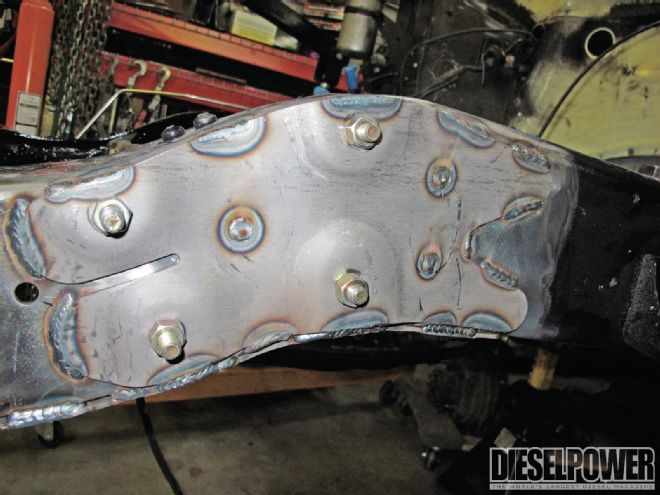No other engine in the light-truck world has a more proven reputation for long-lasting use than the 5.9L Cummins. Like many of you, we’ve admired this motor, yet we’ve always wished it came in more than just Dodge pickups. So when we scored a used ’95 Cummins for $1,200, we began looking for a new home for this Indiana-built bruiser.

| Modern truck frames feature fully boxed construction, hydroformed framerails, and robotic welding. Doomsday Diesel’s C-channel frame (’91 ¾-ton Suburban) has none of those technologies. It’s blacksmith simple and comprised of two side rails riveted together with six stamped-steel crossmembers. It’s not particularly rigid—but that should mean it’ll never crack or fail.
After toying with the idea of constructing a Cummins-powered snowplow truck or a diesel-powered muscle car, we settled on swapping the 6BTA into a ¾-ton Suburban. We chose the Suburban because it was the right size for the engine, it offered four-wheel drive, and it would make an excellent platform for getting out of Los Angeles in a hurry—should the need ever arise. The path we chose for our buildup is part bug-out vehicle and part family camper, wrapped up in a package that should last as long as the engine. We call this project Doomsday Diesel.
Frame Fortification
To get the rest of our ’91 GMC Suburban 2500 up to par with the Cummins, we’ve brought it to Mercenary Offroad, in Camarillo, California, to fit the engine, reinforce the frame, and upgrade the drivetrain. This month, we’re focusing on our truck’s primitive ladder-style frame. While it’ll never be as rigid and robust as a modern truck frame—it should also never fail.

| If you read the Jan. ’12 issue, you saw how we had to cut the GMC’s front crossmember to provide clearance for our swapped-in 5.9L Cummins’ harmonic balancer. We made sure to remove as little metal as possible and cut on a curve to distribute the stresses over a large area. Cutting a square notch in this piece would’ve been easier—but would have likely led to the steel cracking.
The first step to improving our frame was stripping the factory undercoating off. In hindsight, we should have taken it to be steam cleaned. But after a full day of cleaning the rails with scrapers, Simple Green, and wiping it down with acetone and Scotch-Brite pads, our GMC’s chassis looks almost new. After it was clean, Mercenary Offroad upgraded the frame for extreme-duty use with a few select parts from Offroad Design.
